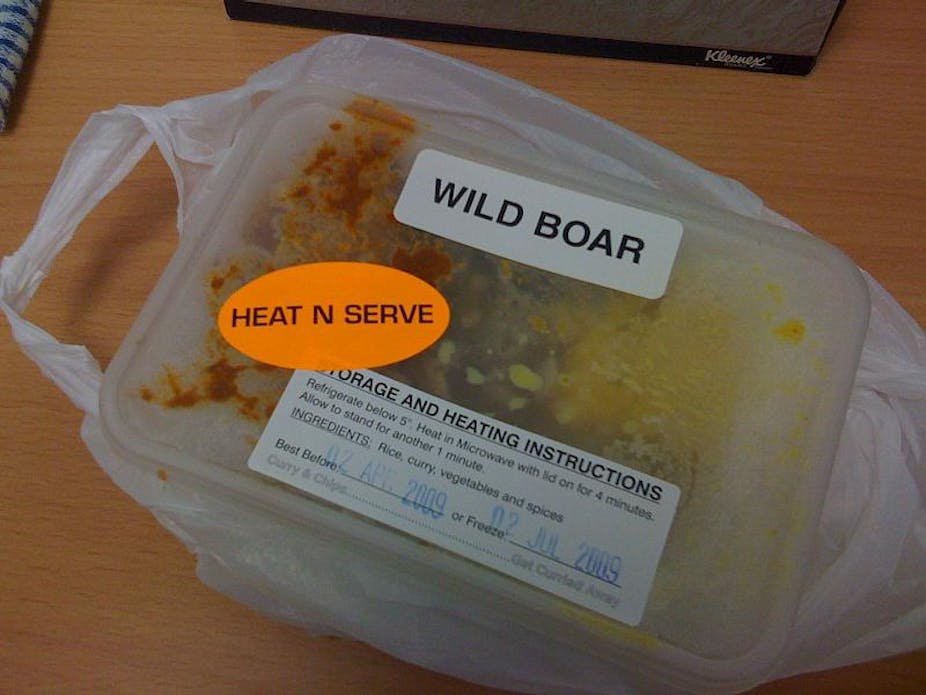In the UK, the wild food trend has re-acquainted people with the various edible plants to be found in the countryside. But around the world wild foods are relied on by a billion people as a key part of their diet. For those who farm, fish, hunt and forage for a living, undomesticated or semi-domesticated plants and animals are an important source of food routinely or in hard times.
Many of these wild foods are to some degree effectively cultivated, yet are typically neglected in global analyses of food security. But evidence from across the world suggests that several hundred species contribute significantly, especially to the health and well-being of those most vulnerable to poverty and hunger. There are key lessons to be learnt from our two recent reviews in 2010 and 2014 of the use of wild foods, which can highlight some of the reasons why the use of wild foods may be declining, and how to stop that decline.
What’s ‘wild’ and what’s ‘farmed’?
Historically there has always been a continuum rather than any clear distinction between the farmed and the wild, and this remains the case. Useful plants and animals beyond field margins are stewarded to varying degrees. In this way farming, hunting, gathering and nomadism are complementary, with those living on the land using a wide range of practices to manage all three.
Examples of management of the wild includes the sparing of young animals, collecting and scattering of seeds and roots, providing feed to animals and fish, clearing forest glades to assist hunting, and irrigating areas wild plants. Food and other ecosystem goods and services are managed for immediate and long-term benefits. Where non-agricultural environments are no longer actively stewarded in this way, important sources of food, fibre, fodder, medicine and income are put at risk.
Humans have historically used around 7,000 species of wild plants for food, yet more than half the world’s total protein and calorie requirements are met by just three agricultural crops: rice, wheat and maize (corn). Just 12 species contribute 80% of all the world’s dietary intake. Global agriculture is focused on 150 commercialised species, while by contrast those communities that routinely use wild plants enjoy a startlingly diverse diet.
We collated evidence from 31 studies of wild food use in 20 countries in Asia and Africa, and found an average 92 species were used for food. In 12 indigenous communities this rose to 120 species, with the Karen of Thailand using 252 species of plant and 63 types of animal.
The link between the importance of biodiversity conservation and food security for those relying on wild foods is clear, especially where poverty and hunger is rife. In the Sahel, for example, edible desert plants are a source of iron, zinc, calcium and essential fatty acids. For the Ferlo of Senegal, half of wild plants are at least partly edible, providing a source of vitamins A, B2, and C.
Use it or lose it
The availability and use of wild food runs into a number of social and ecological challenges. The effects of climate change will have an impact on the habitats and distribution of some species, for example. And turning more land over to farming food crops in order to increase food production often leads to loss of biodiversity around farmed areas which, perversely, affects the availability of long-established wild food species.
Many communities across the world are losing the local knowledge necessary to be able to select, manage and use uncultivated species. Groups that historically have lived mostly off the land are having to rely more and more on food purchased from shops. For example, across the circumpolar North researchers have documented the negative impact on health this has had due to inadequate micronutrients and excessive sugar and fats.
The future of wild foods
Our reviews underline the importance of linking up policies for food, poverty and biodiversity conservation. As 16 of the world’s biodiversity hotspots overlap with areas of hunger and malnutrition, policies need to tackle many issues at once. Those policies designed either to protect biodiversity or increase food production may have unintended perverse consequences for both. One way to address this is effective community-level management of biodiverse areas – between 400,000 and 500,000 community groups were formed between the early 1990s and 2000s to manage watersheds, forests, irrigation, pests and fisheries.
Broadening the focus of agricultural policy away from just production and looking at nutritional security rather than food security would open up the way to promote sustainable intensification of existing farmland which would better preserve a wealth of species biodiversity, on and off the farm. Cultural and agricultural revitalisation projects can focus on reconnecting with traditional food cultures and ecological knowledge.
With wild foods contributing vitally to many agricultural communities, and especially subsistence farmers, conservation and agricultural policies should aim to support objectives in both areas – helping conserve landscapes, improve food security, and promoting sustainable livelihoods.

